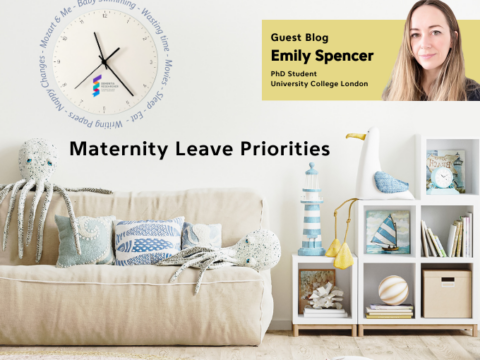What’s that you say, an IN PERSON conference, sign me up – but first lets nail your Conference Abstract!!! You may have noticed in recent months that more and more conferences are promising an in person experience this year. For me, this is extremely exciting. I love a conference and have really missed seeing my friends, colleagues and collaborators (people can be all three!). There is no better place to make new connections, see some exciting new data and let your hair down than a conference. Some of my closest collaborators are people I met in the pub after the end of that day’s sessions. Always take the opportunity to go to one.
First, however, you need to submit your conference abstract. In most cases, your institute will only send you to a conference (they have to pay remember) if you are going to present something. That means you have to prepare and submit an abstract. So how do you do that? In this month’s blog, I’ll give you the best tips to write the perfect abstract.
Basics First
Let’s start with the basics. Conference abstracts always have rules and guidelines and you must follow them. They often have strict limits on either word count or number of pages and you will normally find a rigid structure that they want you to follow. Most conferences provide a handy abstract template that you can download so I recommend using that. They usually want every abstract to be in the same format so make use of that resource but they generally have an introduction, methods, results & discussion and a conclusions/future perspectives section.
NEVER exceed the page limit or word count. This is a really critical point. The point of an abstract is demonstrating to the organisers that you have exciting and interesting work and you can communicate it in a concise and effective way. How can they expect you to stick to a 10 minute presentation time limit if you cannot write about your findings in less than 500 words? If you exceed the page or word limit, expect you abstract to be rejected. You do not want that!
How to Meet the Limits
So how do you condense your work into 500 words or a single page? Let’s start with page limits.
Firstly, you don’t always need to include figures in an abstract. Most abstract guidelines include statements like “Figures and Tables should be used only when necessary to substantiate results”. This means in most cases, simply describing the data you will intend to present is sufficient. Figures take up a lot of space and if you are working to something like a strict 1-page limit, you may need that space for your text. Most figures will be reproduced in black and white anyway so if you wanted to include any nice images of cells, the effect will be lost in grey scaling.
This next tip will help you meet both page and word limits. Be CLEVER with your text. The point of an abstract is to be concise so get to the point quickly. For your introduction, try not to spend more than 4 or 5 lines describing the background behind the issue you want to try and solve followed by a line or two that broadly frames your work. “This study presents an approach for…” and so on. For your methods section, you don’t need to write a stepwise protocol with material and equipment sources. You just have to outline the techniques you used to collect your data. See below for an example taken from one my abstracts. For the results and discussion the same principal applies. Be nice and concise. A good rule of thumb is 1-2 sentences per data set you are describing.
“Brain microvascular endothelial cells (BMEC’s) and cortical neurons were differentiated from iPSCs using previously reported protocols. To form a ‘neural’ component of the in vitro BBB model, iPSC neural precursor cells were embedded in a type I collagen hydrogel and matured into cortical neurons for 3 weeks. The hydrogel was then coated with a basement membrane of Matrigel and iPSC BMECs were seeded onto the surface. The resulting structure was cultured for 10 days and various analyses were performed including RT-PCR, immunofluorescence microscopy (IFM) and trans-endothelial electrical resistance (TEER) to determine the structural and functional properties of the neurons, BMECs and the BBB model as a whole.”
Finally, format your abstract in a way that saves space. Unless they state you have to, avoid double spacing. Keep your affiliations as short as possible and make your reference section small. Normally there is a minimum font size in an abstract template but you can usually make your references smaller than this because they are not part of the abstract body. Small text in columns. If you do this you can get your references down to as little as a single line.

The purpose of a conference abstract is to summarize the main points of your paper that you will present in the academic conference. In it, you need to convince conference organizers that you have something important and valuable to add to the conference.
Tailoring Your Abstract
Another key thing to remember is that the conference you are submitting to will have a target audience. Your work might bridge multiple disciplines or areas of focus. Larger conferences have a much broader audience so you have to do less tailoring but if you are attending smaller, more focussed meetings, the organisers will have a very clear idea of the themes they want to cover in the programme. It is important to read this before you start writing your abstract to make sure your work fits in with what they are looking for. If it does, make sure you present your work in a way that fits nicely with their areas of focus.
For context, see below for two examples of the opening lines for abstracts submitted to one conference focussing on cell biology in Alzheimer’s disease and another conference focussed on using biomaterials approaches to studying disease. One is more biology focussed while the other is more engineering focussed but both present exactly the same work.
Biology Abstract
“Induced pluripotent stem cells (iPSCs) provide a promising platform for modelling neurodegenerative diseases. Isolation of iPSCs from patients is non-invasive and neural differentiation can yield neurons bearing in vivo pathologies.”
Biomaterials Abstract
“Alginate has previously shown promise as a neural cell scaffold due to structural similarities to hyaluronic acid, a primary component of brain extracellular matrix (bECM). A lack of cell adhesion motifs in the native structure, however, means alginate often has to be modified for neural cell culture applications.”
Very different openers but both present the same study. It’s all about the framing.
Don’t Undersell Your Work
It’s also important to remember that conferences are a place to get others excited about your work. When you write your abstract, sell it. This doesn’t mean you need to claim you have the cure for Alzheimer’s but make sure whoever reads it understands why what you are doing is important and how it is different to what others are doing. You can do this a bit in your introduction but you can really drive it home in the conclusions section. Make it clear that your work is worth sharing and you have exciting future plans for it. You can be broad but just let them know your work has legs!
Proof Proof Proof!
This last point is incredibly important. Proof-read your abstract multiple times. Spelling mistakes make you look sloppy and gives the impression you don’t really care. If you did, you’d make sure everything was right. Make sure you haven’t got any grammatical or spelling errors and then send it on to your supervisor so they can read it too. They will want to see it before you send it and may pick up on some errors you didn’t notice yourself. Sometimes a second set of eyes is very useful!
Eventually, you will have an abstract that both you and your supervisor(s) are happy with. Make sure that is the case before you send it. You PI will be very unhappy if you submit something without their approval. Once you have that submit and forget about it. Agonising over whether it will be accepted is of no benefit. Carry on with your work and await their verdict. Good luck!
Extra Guides
If you enjoyed this week’s blog but want more tips, here’s a few links to other useful posts on this topic:
- Video – “Writing an Abstract for a Conference or Symposium”
- Video – “How to Write a Successful Conference Abstract”
- Aticle – “Writing Abstracts for Scientific Conferences”
- Article – “How to write an abstract for a conference”

Dr Sam Moxon
Author
Dr Sam Moxon is a biomaterials scientist at the University of Manchester. His expertise falls on the interface between biology and engineering. His PhD focussed on regenerative medicine and he now works on trying to develop 3D bioprinting techniques with human stem cells, so that we better understand and treat degenerative diseases. Outside of the lab he hikes through the Lake District and is an expert on all things Disney.
Looking for a conference where you can present your research? Take a look at our listings, and share your top tips for abstract writing below.

 Print This Post
Print This Post




